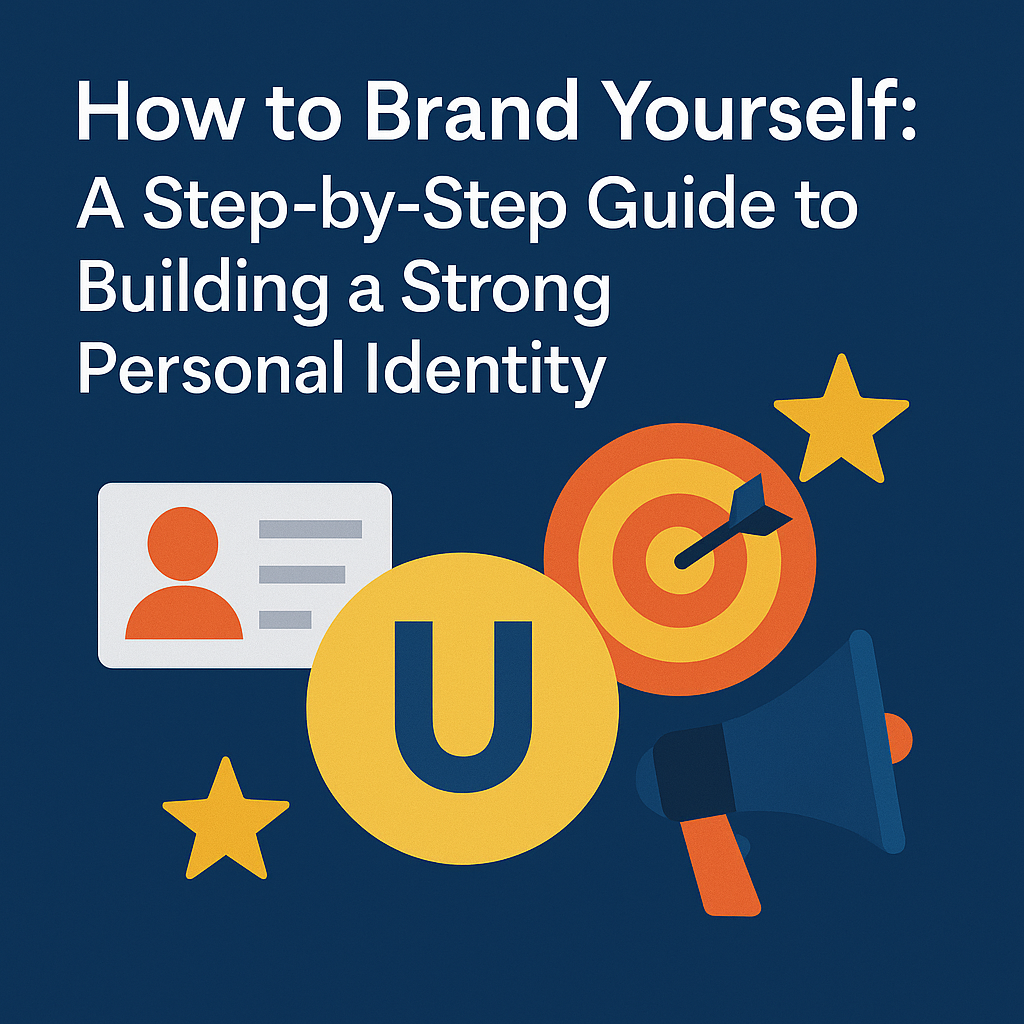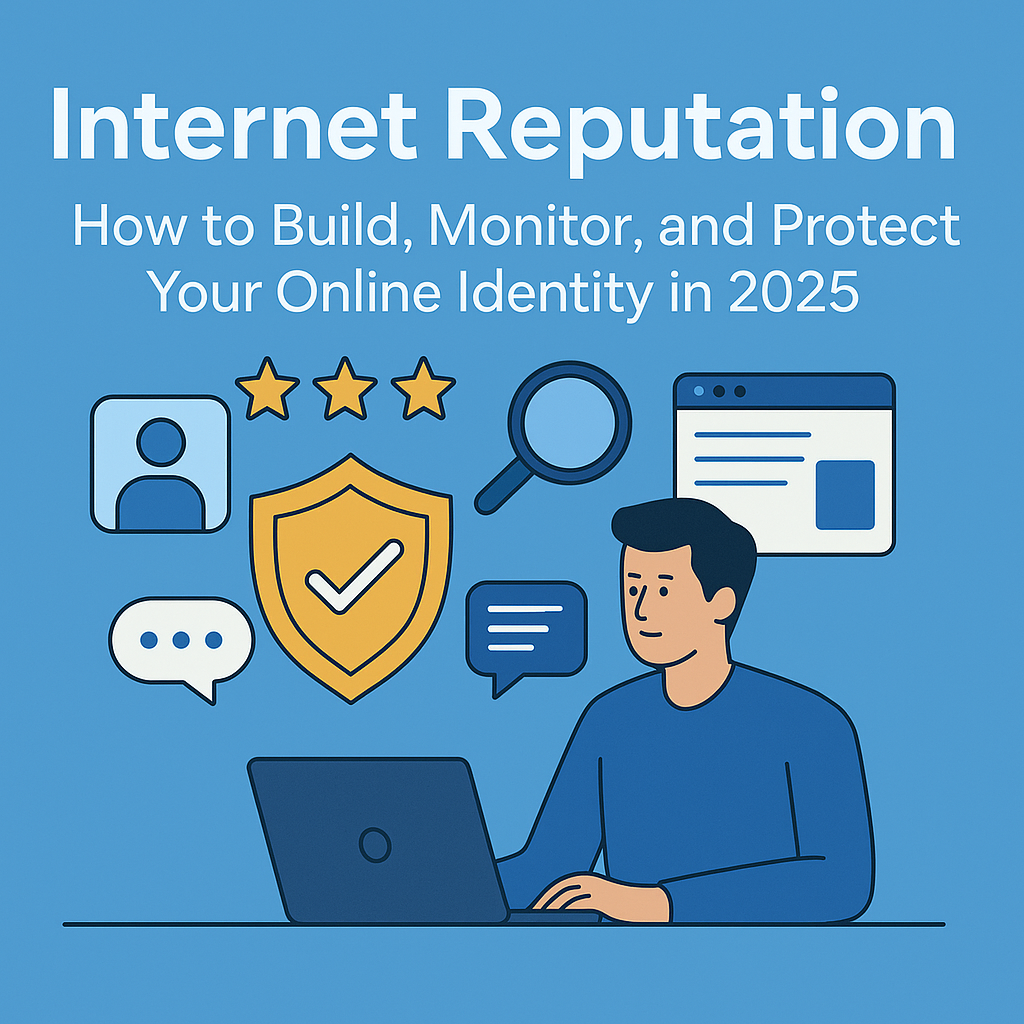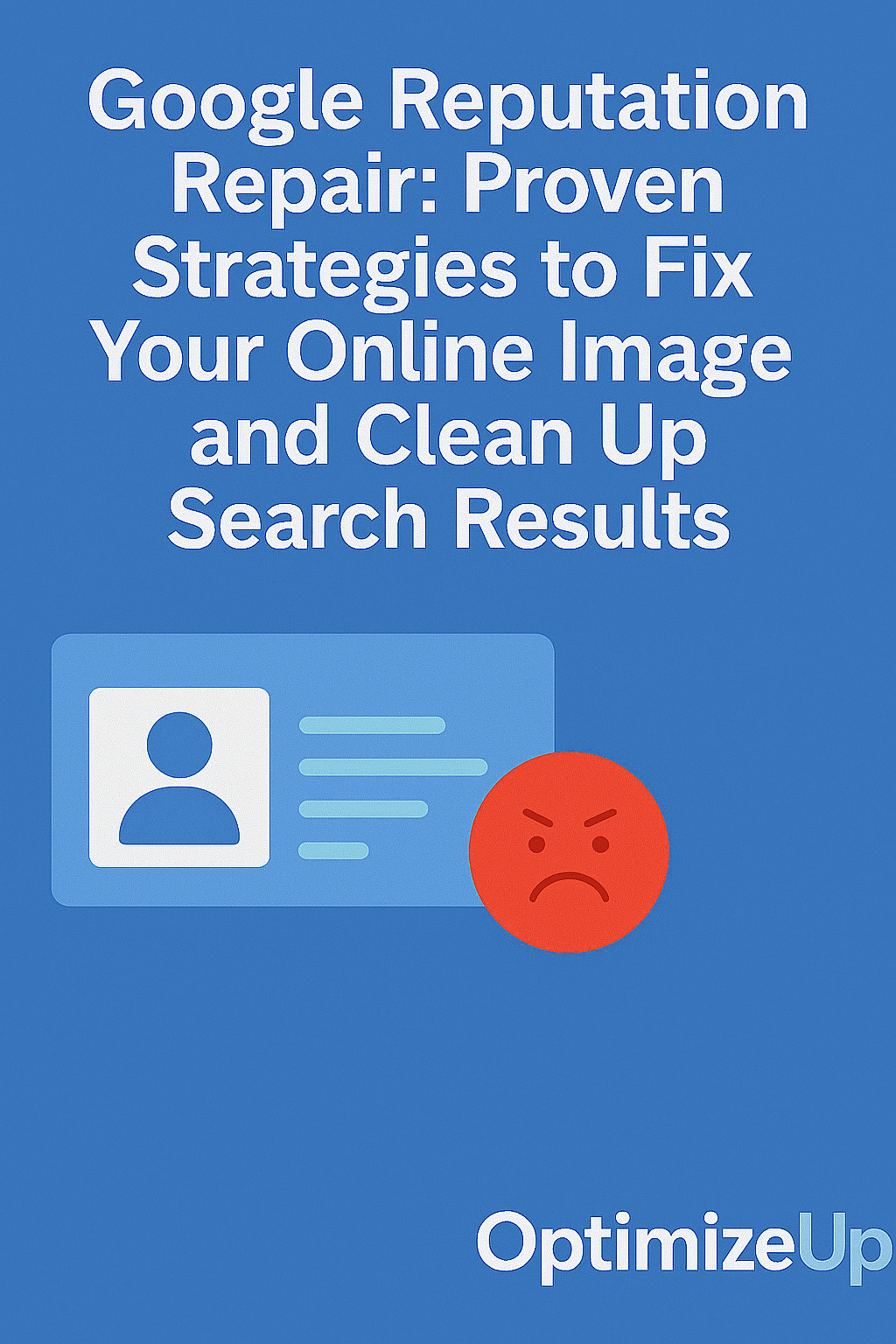What Does It Mean to Brand Yourself?
Branding yourself means curating your identity, reputation, and value proposition in a way that aligns with your goals, audience, and personal values. Your personal brand is how others perceive you—it’s the story they tell about who you are, what you do, and why you matter.
“If you don’t define your brand, someone else will.” — Jeff Bezos
Branding isn’t just for influencers or executives. It’s essential for:
- Entrepreneurs
- Job seekers
- Freelancers
- Consultants
- Creatives and thought leaders
Your personal brand should reflect authenticity and align with the future you’re actively building. It’s about who you are now and where you’re heading.
Why Personal Branding Matters in 2025
- LinkedIn reports that 85% of job opportunities come through networking—not applications.
- Google search results are often a person’s first impression.
- Personal brands often earn trust faster than corporate logos.
Whether you’re trying to launch a startup, get hired, or grow your influence—your brand is your platform.
In a world where people Google you before meeting you, what shows up can determine whether you get that opportunity, contract, or referral.
Step-by-Step Process to Brand Yourself Effectively
Step 1: Define Your Personal Brand Identity
Ask yourself:
- What are your core values?
- What skills or knowledge do you want to be known for?
- What kind of people do you want to attract?
Use a personal branding worksheet or try this simple exercise:
I help [target audience] achieve [goal] by leveraging [unique strengths or experience].Example: I help small business owners scale through performance marketing and automation tools.
Clarity here helps you build a consistent tone, message, and image across all platforms.
Step 2: Conduct a Personal Brand Audit
- Google your name—what shows up?
- Review your social media presence (Facebook, Instagram, LinkedIn, Twitter/X)
- Audit your email signature, voicemail, bios, and headshots
Look for inconsistencies and outdated content. Consistency builds recognition.
Ask for feedback from friends, clients, and mentors. What do people associate with you now—and is it aligned with your goals?
Step 3: Create Your Unique Value Proposition (UVP)
Your UVP explains why you’re different.
Great UVPs are:
- Specific
- Audience-focused
- Benefit-driven
Example: “Helping founders unlock growth using organic SEO + conversion copy.”
You should be able to state your UVP confidently in under 15 seconds.
Step 4: Craft Your Personal Brand Story
- What inspired your journey?
- What transformation have you achieved?
- What values guide your work?
Use your brand story in:
- LinkedIn bios
- Website About Me sections
- Podcast interviews
Great brand stories are emotionally resonant, relatable, and demonstrate vulnerability as well as strength.
Step 5: Develop Your Visual Identity
Your design elements should match your tone:
- Logo or monogram
- Color palette
- Fonts and imagery
- Professional headshots
Use tools like Canva or Looka to build your brand kit.
For consistency, create templates for slides, proposals, social media posts, and email signatures.
Step 6: Build a Personal Website or Portfolio
This is your brand’s home base. Include:
- Your bio
- Portfolio or case studies
- Testimonials
- Contact info
- Blog or content hub
Try platforms like Carrd, Webflow, or Squarespace.
Consider adding:
- Lead capture forms
- Downloadable resources
- Media kit
Step 7: Optimize Your Social Profiles
Use the same name, handle, bio tone, and profile photo across:
- Twitter/X
- TikTok (if relevant)
- YouTube
Bonus tip: Create a Linktree or custom landing page to unify your links.
Your profile bios should lead with value. Who are you? What do you help people do? Why should they follow you?
Step 8: Create Value-Driven Content
This is how you build credibility and grow reach.
Examples:
- LinkedIn thought leadership posts
- Twitter threads
- YouTube videos or Shorts
- Guest blog posts
- Speaking at webinars or local events
Aim to:
- Solve problems
- Share stories
- Highlight client results
Consistency matters more than frequency. Choose platforms that align with your strengths.
Step 9: Build and Nurture Your Network
Branding is about relationships.
Strategies:
- Engage on LinkedIn daily
- Join Slack or Facebook groups in your niche
- Collaborate with creators and influencers
Use Calendly to schedule virtual coffee chats.
Be generous. Promote others. Give before you ask.
Step 10: Manage Your Reputation Proactively
Google yourself monthly. Set alerts with Google Alerts or use Mention.
Respond to:
- Online reviews
- Negative comments
- Misquoted or outdated information
Consider working with a firm like OptimizeUp for deeper monitoring and removal strategies.
Branding Tips Based on Career Stage
For Job Seekers:
- Create a one-page portfolio
- Publish LinkedIn articles
- Highlight soft skills in your About section
For Entrepreneurs:
- Use personal branding to humanize your startup
- Pitch your story to podcasts and newsletters
For Freelancers:
- Focus on testimonials and before-after case studies
- Leverage platforms like Upwork, Fiverr, or Clarity.fm
For Creators and Influencers:
- Use content pillars to structure your messaging
- Include brand deal metrics on a media kit
Tools to Help Brand Yourself
| Tool | Use Case |
|---|---|
| Canva | Create visual identity |
| Carrd | Launch simple web pages |
| Buffer | Schedule social content |
| Notion | Organize your content plan |
| OptimizeUp | Reputation and SEO support |
Real-Life Example
Name: Amanda, UX Designer
Challenge: Struggled to stand out on LinkedIn and attract freelance clients
Action: Built a portfolio site, published UX tips weekly, networked at conferences
Results: Went from 300 to 3,500 followers and booked 5 high-ticket clients in 90 days
How OptimizeUp Can Help
At OptimizeUp, we:
- Suppress negative content in Google results
- Create custom personal brand content calendars
- Manage reputation across platforms
- Design SEO strategies that make your name rank
👉 Get your personal branding audit today and start building a reputation that earns.
Frequently Asked Questions
It helps you get noticed, build credibility, and differentiate yourself in competitive markets.
Not necessarily. A consistent profile photo and name across platforms can be just as effective.
Yes. Recruiters often search for candidates online before interviews. A strong personal brand increases your chances.
Expect to see traction in 3–6 months of consistent effort. Thought leadership takes time.
You don’t need to be loud—just clear, authentic, and consistent.
Your personal brand can evolve. Update your UVP, story, and content to reflect your new direction.
If you share content with drastically different tones or audiences, yes. Otherwise, consistency builds connection.





